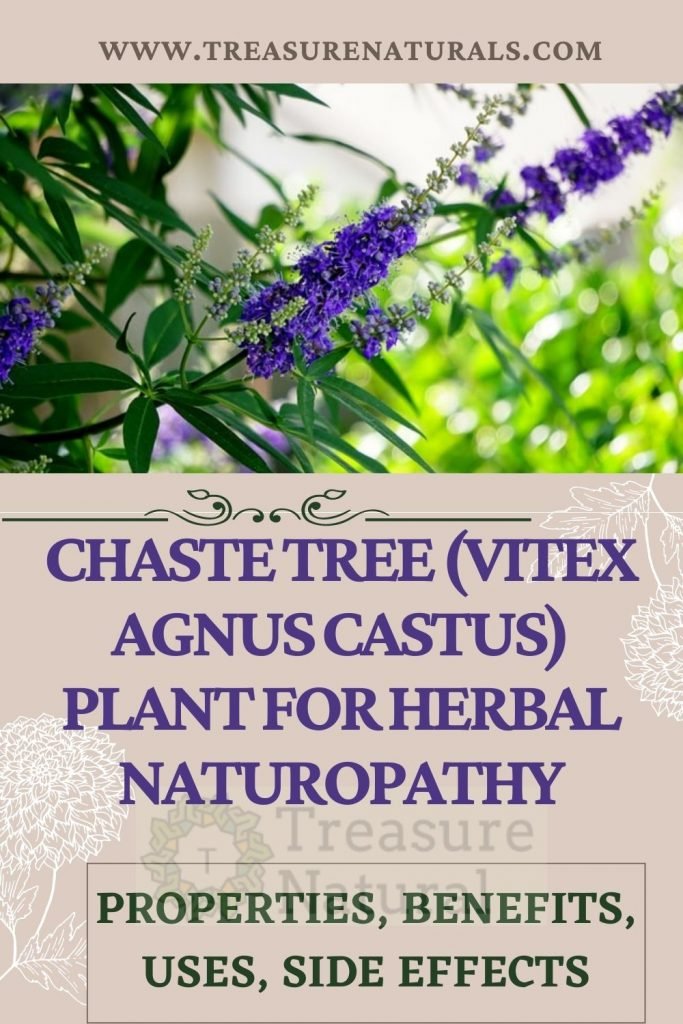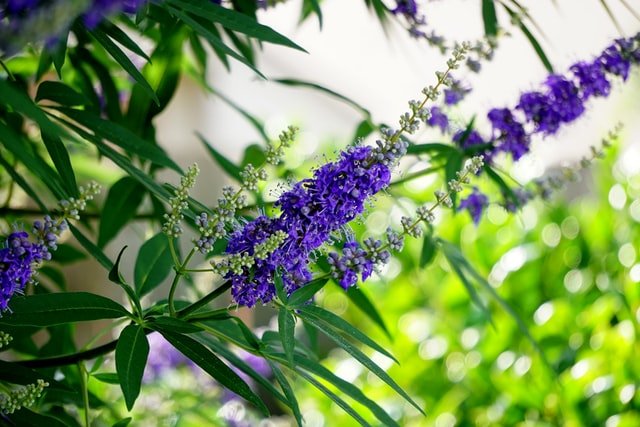
Agnycastus is a plant used above all to treat menstrual cycle disorders for its balancing action on hormones.
Chaste tree (Vitex agnus castus) is a plant of the Verbenaceae family useful for regulating menstruation and treating premenstrual syndrome and other problems related to the cycle.
What is the chaste tree used for
Chaste tree is a plant of the Verbenaceae family used in herbal medicine and phytotherapy, which use its fruits and flowering tops.
The chaste tree is a natural remedy useful in case of:
- Intestinal spasms;
- abdominal pain;
- nervousness;
- menstrual irregularities;
- premenstrual syndrome;
- menopausal disorders.
Properties of the chaste tree
The fruits and flowering tops of chaste tree are characterized by the presence of a phytocomplex that contains iridoids, flavonoids, essential oil and which gives this plant drug its activity.
In fact, the agnastocasto has properties:
- Antispasmodic;
- sedative;
- hormonal.
These properties make it a useful remedy in natural supplements for PMS and in those used in case of irregular, excessively scarce or abundant menstruation.
Traditionally, the chaste tree is also used to reduce intestinal spasms and the pain associated with them, as a sedative, to reduce sexual desire and to promote the production and secretion of milk in breastfeeding women.
Benefits of the chaste tree
The main benefits of agocasto are related to its ability to act at the dopaminergic level by reducing the production of prolactin, a key hormone in regulating the menstrual cycle.
The administration of chaste tree supplements can in particular favor the production of hormones by the corpus luteum, improving the balance between estrogen and progesterone in favor of the latter.
By improving hormonal balance, chaste tree works and is effective in reducing symptoms related to menstrual syndrome, both physically and emotionally.
The chaste tree benefits for the cycle also translate into more regular and less painful menstruation. As for chaste tree and menopause, this remedy can be useful to relieve some symptoms related to the cessation of menstruation, in particular the tension and pain in the breasts suffered by some women.
Furthermore, the phytocomplex of the agnocastus seems to increase the production of endorphins, further increasing the benefits of this remedy to regulate the menstrual cycle and in menopause disorders in particular as regards the perception of pain and the improvement of mood.
Therapeutic indications
Preparations based on chaste tree are indicated in case of disorders related to the menstrual cycle and menopause, including:
- Irritability;
- nervousness;
- mood changes;
- breast tenderness;
- water retention;
- meteorism;
- abdominal cramps;
- nervous hunger;
- bleeding (spotting);
- amenorrhea (absence of menstruation);
- menorrhagia (heavy menstruation).
The chaste tree is therefore a useful remedy for ailments related to the cycle. Although it can bring benefits in case of a bad mood, it is not necessary to resort to the chaste tree for anxiety: it is in fact a secondary action due to the action on hormones.
Likewise, it is incorrect to say that chaste tree makes you lose weight, as the effect on water retention and increased hunger before and during periods may have no effect on body fat.
How to use
The chaste tree can be taken at a variable daily dosage, ranging from 30 to 240 mg of dried fruit.
The chaste tree herbal tea is prepared with a spoonful of dried and shredded fruits to be left to infuse in hot water for a few minutes. You can drink it once or twice a day.
The mother tincture of chaste tree is administered instead from one to three times a day by diluting 40 drops in water.
On the market there are chaste tree supplements obtained from dry or fluid extract of the drug, to be taken according to the manufacturer’s instructions.
Contraindications
Agnycastus has no particular contraindications, but care must be taken in case of simultaneous intake of hormonal therapies and drugs that act on dopamine.
Agnocasto should not be used in pediatric age, pregnancy, breastfeeding and in hormone sensitive medical conditions.
Side effects
No particular side effects are known for the use of the chaste tree, except in the case of individual sensitivity.
Description of the plant
The chaste tree plant (Vitex agnus-castus) is a small tree or large ornamental shrub, with quadrangular, tormenting gray branches.
The leaves are opposite, with digitiform lamina composed of 5-7 lanceolate green-gray segments and have a smell similar to that of sage.
The purple and lavender-colored flowers are bell-shaped hermaphrodites, gathered in 10 cm spikes at the apex of the branches. The fruits are 4-5 mm drupes with a slightly elongated shape and a reddish black color containing 4 seeds similar to black pepper.
Habitat of the chaste tree
The chaste tree grows in the beds of streams and on the banks of rivers, in valleys and hills of the Mediterranean and Central Asia.
Background

The name Vitex derives from Vitilium which means “intertwining” and refers to the flexible but strong and hard branches of the plant, formerly used to build palisades.
The name agnus instead means “lamb” and castus that is “chaste” refers to the anaphrodisiac property (counteracts testosterone) in man. For this reason it was customary to arrange the buds of the plant in the clothes of the monks, in order to suppress their libido, and the seeds – known as “monk’s pepper” – were used as a spice in their cooking.






